Reading can be considered just one of the skills to learn a language. In fact, it is a very important skill if you are learning the language for any formal purpose: to read documents, read the news, or any content on the web. Learning to read in Arabic is no exception. However, there are some added challenges involved: mainly reading the script. This can be intimidating for some learners, as we can see in this picture.

In reality though, learning the script can be accomplished in a very short time. However, is knowing the script enough to be able to “read” Arabic? Of course not: the writing of Albanian also uses almost the same script as English, but can the speakers of English “read” Albanian?
This is where it is important to break down the “reading” into a number of elements, or “skills”. These skills would cover the whole process of “seeing” something written in the language, up to “understanding” what is written. In psychology, these processes are referred to as “cognitive processes”, which involve processing information from different senses and from memory in parallel. Let’s lay out these skills one by one:
1- Main Skill for reading Arabic: Knowing and recognizing letters
You may have seen charts like these, mainly used for teaching children a list of alphabet letters.
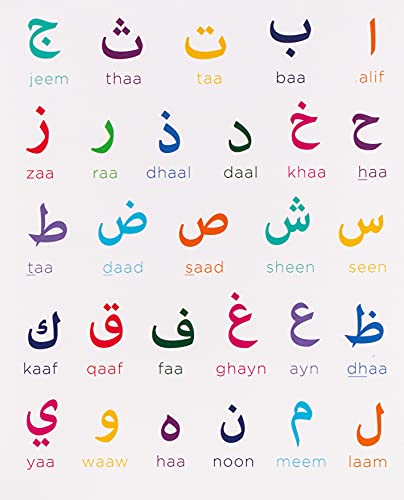
You may have found songs or rhymes for singing the names of Alphabet letters.
How useful are these? Of course, this is an important step that even native speakers go through in order to learn their native written language. However, this is not enough, at least in Arabic. This is because there is one particular feature in the Arabic alphabet: letters take different shapes depending on where they are in the sentence. Therefore, a more sound approach is to learn the shapes of each letter, so that you can recognize it when you see it. Knowing the names of letters, then, would be useful because you will be able to point any letter you recognize with any shape to the name of the letter.
2- Knowing and recognizing diacritics
One peculiar aspect of Arabic writing is that short vowels are not letters. They are actually “diacritics”. These diacritics can be referred to as “harakaat” or “tashkeel”. It is important to point out that diacritics also include elements other than short vowels, such as “shaddah”, which doubles the sound of a letter. These are relatively few, and wouldn’t take long to learn, but it’s important to know how they sound when combined with letters.
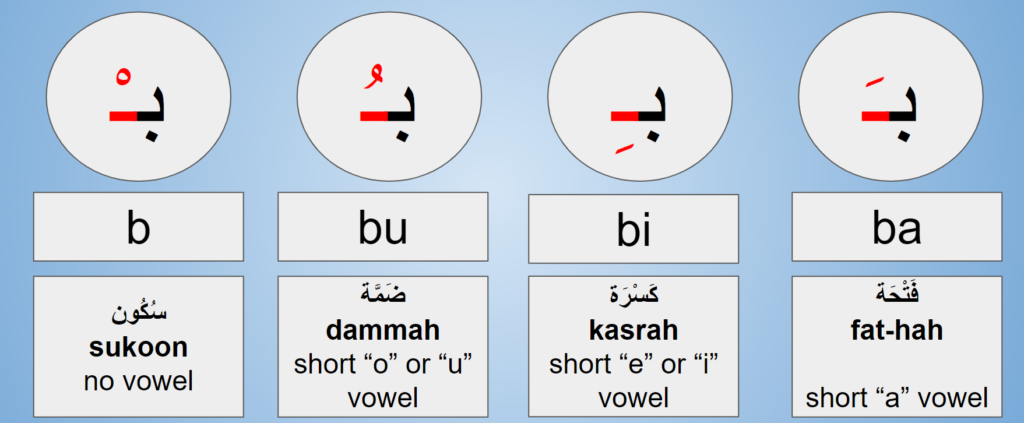
3- Being able to “sound out” the words
Knowing letters and diacritics is important, and by using them you can go letter by letter in a word: identify the letter sound and the applied diacritics, and there you go: you can sound out a whole word in Arabic! Isn’t that great?
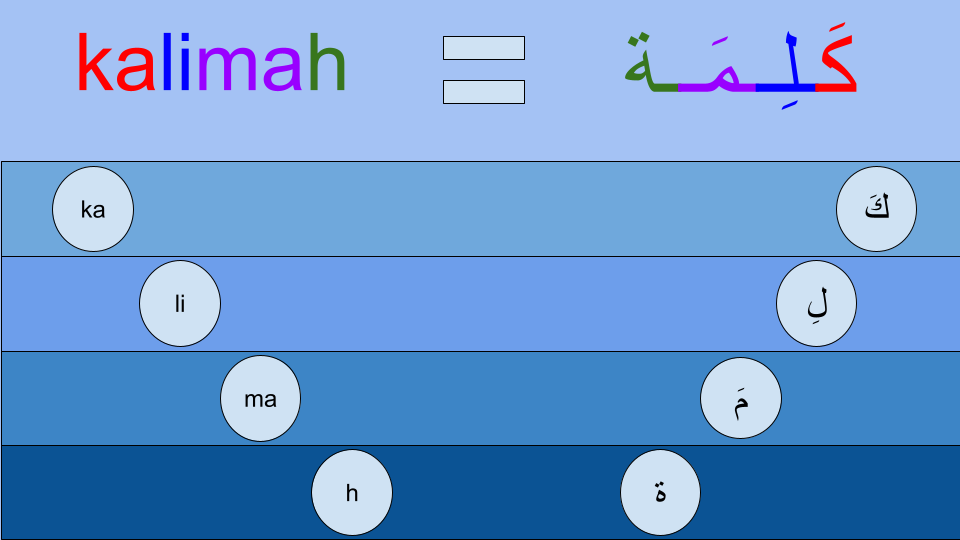
It is great; however, there is bad news here. In most Arabic writing, diacritics are almost non-existent. This can be challenging, even sometimes to native Arabic speakers. Here is where we start to apply what we have learned on actual words. When you are learning a new word, you need to pay special attention to how it is written. Try to associate the letters with the sound of the word. And by all means, when you’re learning a new word, make sure to have a resource that allows you to listen to how it is pronounced by an actual native speaker. Otherwise, you wouldn’t be able to know the correct pronunciation. When you learn many new words with their correct pronunciation, you will be able to formulate patterns for sounding out any word you read.
4- Learning “Function Words” for reading Arabic words
Moving to actual sentences, you will find that a large number of words (in any language) consist mainly of what is known as “function words”. What are function words? Just have a look at the first sentence in this paragraph and see the words in bold. These words can be articles, pronouns, prepositions, question words, and similar words. In linguistics, these words are referred to as “function words”, because they are mainly there for a grammatical function. In Arabic, there are many such words: such as articles, personal pronouns, possessive pronouns, relative pronouns, demonstratives … etc. Some of these are not actually words, but rather prefixes or suffixes. Knowing these words helps you in two ways. First, you are able to recognize many of the words within the sentence. Second, you are able to understand the structure of the sentence.
5- Identifying “Parts of Speech”
All human languages have different word types: such as nouns, adjectives, verbs, adverbs and more. It is absolutely important to know what is the word type of each word in the sentence you’re reading. One helpful aspect in this regard is knowing the function words. For example, if you know that the function word “in” is a preposition, it is unlikely that the word coming after is a verb.
Of course sentences can be very complex, but function words can give a broad structure of the sentence. Knowing the word types helps complement this structure. For example, saying “the girl is beautiful”, is different from “the beautiful girl”. So knowing which word is a noun, and which is an adjective can allow us to know both the content of the word and what it roughly means (even if we don’t know the exact noun or adjective), and also the structure of the sentence and understanding what is being written.
6- Learn “Content Words” for reading Arabic
In early childhood education in elementary schools, teachers sometimes teach children “sight word”. These are words that appear frequently and are useful in reading. These words can include function words that we talked about, and they can also include words related to a particular domain, such as the words used in story books. This is quite important here, because any language consists of tens and maybe hundreds of thousands of words. It is unreasonable to expect to know, especially for a non-native speaker, the majority of these words. What should we expect instead?
One thing to expect is to attain knowledge of words related to a particular subject, task or field: such as the nouns, verbs, adjectives and adverbs used in the context of math, literature, art, news or so forth. Can we know all words for all the fields? Perhaps, but perhaps it is better to focus on the vocabulary of mainly the field you are interested in.
The other thing to expect is a very interesting statistical law. The name of this law is Zipf’s law, which indicates, in plain terms, that if you sort all the words in a language by their frequency, the first few words would take up a very large percentage of all the words in any given text. For example, the first word can occur 20% of the time in any text (think of the word “the” in English for example), then the one after will be perhaps 12%, and so forth.
How to make use of this frequency distribution?
This way, you will find that the first 100 words in the language can occur like 50% of the time in any given context. Of course, many of these words are function words. Still, if we move to content words, we will find that the higher frequency words account for a large portion of any text. For example, you will encounter the noun “question” or the verb “ask” much more frequently than you will encounter words such as “Accismus” or “aggrandize”.
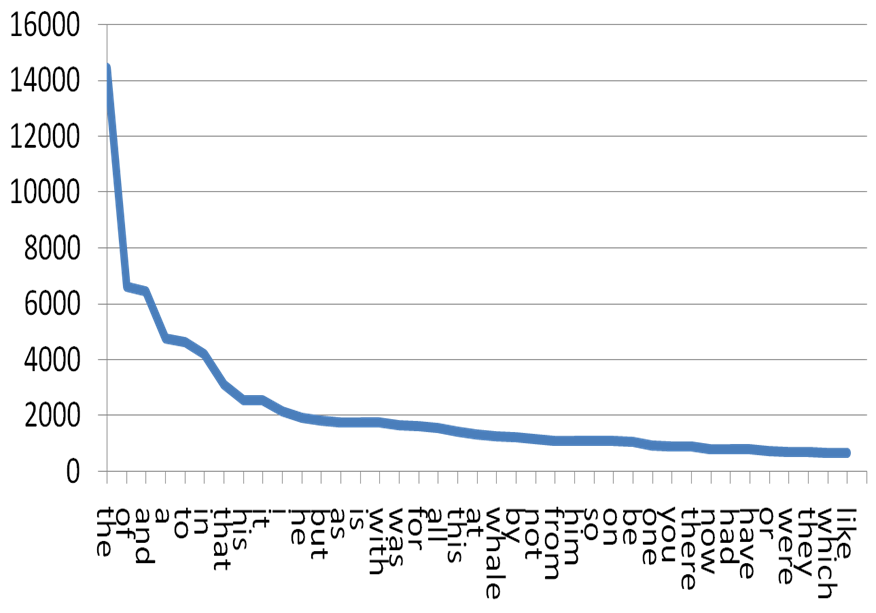
What’s the main take of this? Focus on a particular field, start with the most frequent words in it.
7- Learn Morphology skills: building words
Finally, one of the very important skills for reading Arabic is to understand its morphology (the science of word building). Arabic words form according to “templates”. Templates consist of two things:
- Root: any word in Arabic has a root (usually consisting of 3 letters)
- Wazn: (literally means “weight”): any word has a format of how to add other letters to the root.
For example, the word “maktab”, which means office, has the root of KTB (the sound of “k”, “t”, and “b”). The wazn would show how to add additional letters to the word. In this case, it would be maktab, with the addition of the letter “m”, and the vowels “a”. This is an advanced topic, but it is important to learn it at some point. It will make many things make sense, including topics such as making plurals, and conjugations for certain verbs, and so forth.
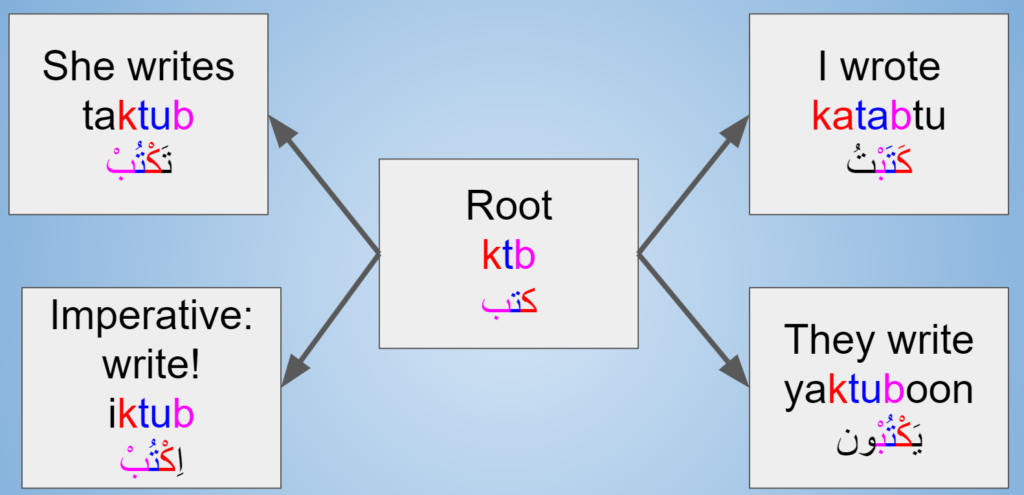
How to build your skills for reading Arabic?
At Champolu, we provide many learning solutions to boost your skills for reading Arabic using Champolu Method. You can start to use the free app ALIF-laam to practice your alphabet, diacritics, and sounding out skills.
It might be helpful if you want to take the Udemy course “Basic Arabic Reading” to give you a clear explanation of these topics.
In addition, you may want to start with learning the basics of Arabic grammar and function words. As you have seen in the article, function words can be very important for understanding what is written. You can take the course “Basic Arabic Grammar” to start learning.
Also make sure to subscribe to Champolu social media, where you will constantly find new materials to learn more vocabulary and grammar.
[email-subscribers-form id=”2″]
